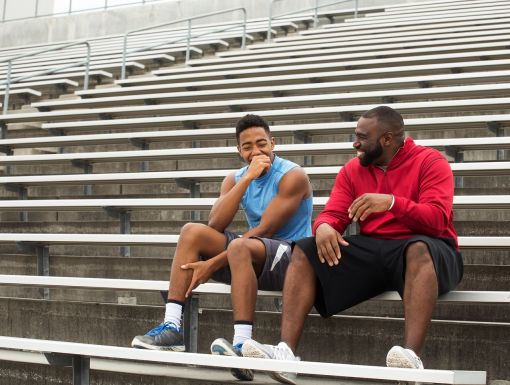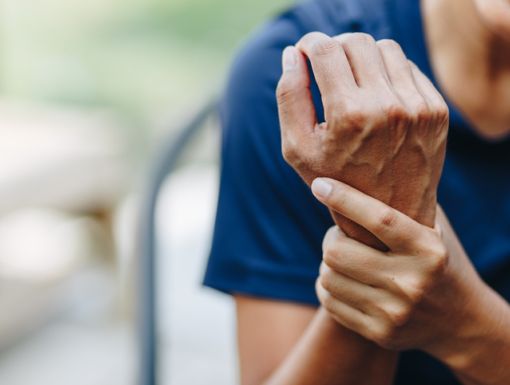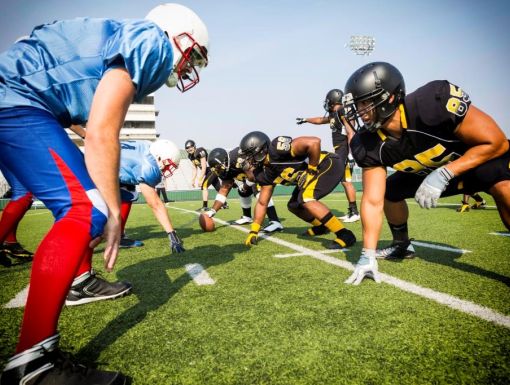
Top Cheerleading Injuries and How to Prevent Them
Cheerleading has one of the highest injury rates among high school and college sports. The high-impact nature of the sport makes its athletes prone to specific types of injuries that most commonly affect the ankle, knee, hip and shoulder.
Recognizing the most common cheerleading injuries and learning effective prevention strategies is important to keeping athletes safe and ensuring their long-term well-being.
What are the most common cheerleading injuries?
Cheerleading combines athleticism, teamwork and creativity, incorporating disciplines of dance, tumbling, jumps and stunts. It takes strength, flexibility and coordination. However, its high-energy routines and physical demands also carry significant injury risks, regardless of a cheerleader’s age or skill level.
Understanding these risks helps athletes, coaches and parents take necessary precautions. Common cheerleading injuries include:
- Ankle injuries: Ankle injuries, such as sprains, are among the most frequent injuries in cheerleading. They often occur during jumps, stunts or awkward landings, resulting in swelling, pain and difficulty putting weight on the foot. Proper warmups, supportive footwear and regular strengthening exercises to reinforce stability can help prevent these injuries. Using ankle braces or taping also can help.
- Knee injuries: Knee injuries can happen during sharp directional changes, aggressive jumps or sudden stops. Injuries can include muscle and tendon strains, and well as ligaments strains or tears. One of the more significant injuries includes tearing of the anterior cruciate ligament (ACL). ACL tears often require surgery and can lead to lengthy recovery times. Strengthening muscles around the knee, practicing proper landing techniques and incorporating agility drills into training routines can help prevent knee injuries.
- Shoulder injuries: Cheerleaders often experience shoulder injuries, like rotator cuff strains or joint dislocations, from stunting, falls and overuse. To prevent shoulder injuries, cheerleaders can work on strengthening their upper body, regularly stretching and using proper technique during routines.
- Hip injuries: Hip injuries in cheerleading often happen because of repetitive strain caused by jumps, tumbling and stunts. Because of the flexibility and repetitive movements required in cheerleading, the hips are under a lot of strain. Overuse and improper technique can lead to conditions like hip flexor tendonitis, bursitis and even labral tears. Symptoms may include discomfort during movement, stiffness or difficulty maintaining balance. Regular stretching, hip-strengthening exercises and reinforcing proper technique, especially during jumps and stunts, can help with injury prevention.
- Overuse injuries: In addition to sudden injuries, cheerleaders are at risk for overuse injuries caused by repetitive motions and intense training schedules, which may include year-round competition. Conditions such as stress fractures, tendonitis and “cheerleader’s knee” can develop gradually and often go unnoticed until they interfere with or prevent participation. “Cheerleader’s knee” is an overuse injury caused by inflammation of the patellar tendon, the tissue that connects the kneecap to the shin, often due to repeated jumping, landing or squatting. Balanced training, adequate rest, cross-training and promoting a team culture where athletes are encouraged to listen to their bodies rather than push through pain can help prevent these injuries.
By identifying these common injuries, and incorporating preventative measures, cheerleaders can focus on enhancing performance while also prioritizing safety, avoiding injuries that impact their performance and even their long-term health.
How can cheerleading injuries be prevented?
Taking proactive steps can significantly reduce the risk of injuries, and these strategies help ensure athletes can thrive in a safer environment. Prevention techniques include:
- Warmups and stretching: A structured warmup routine prepares the body for activity, reduces the risk of strains and sprains, and can be completed in as little as five to 10 minutes. Dynamic movements such as jogging, squats, lunges, leg swings and arm circles increase blood flow, while static stretches improve flexibility. Consistent warmup routines contribute to better performance and injury prevention.
- Safe stunt execution: Stunts are a core part of cheerleading, but they come with risks. Coaches, parents and athletes must prioritize proper technique, body alignment and clear communication. Effective spotting and consistent supervision are critical for executing stunts safely. Teams should build confidence through structured practice sessions that emphasize safety over difficulty.
- Proper hydration and rest: Proper hydration and rest are also important to preventing injuries. Cheerleaders often train for long hours, which can lead to fatigue. Tired muscles are more prone to injury, so staying well-rested and hydrated helps athletes perform at their best and recover faster.
- Strength and neuromuscular training (NMT): Incorporating proper strength training before, during, and after the cheerleading season is crucially important for ensure adequate muscular strength and stamina to keep up with the rigors of the sport, as well as promoting overall health. NMT can be used in the preseason to help prevent injuries, like ankle sprains and ACL tears, and utilizes simple movements and exercises to enhance the connections between the brain and muscles to improve athletic performance, reduce injury risk, and optimize overall movement efficiency.
How are cheerleading injuries treated?
Prompt and appropriate treatment is essential for managing injuries effectively and preventing complications. While not all injuries are preventable, early care can help with recovery.
For acute injuries, the R.I.C.E. method is a trusted approach:
- Rest the injured area.
- Ice the affected area, to help reduce swelling.
- Compress the affected area with a compression wrap or sleeve.
- Elevate the injured limb, ideally above the heart, to help reduce swelling.
Monitor the cheerleader’s condition closely. If pain persists or the injury does not improve within 48 hours, consult with a healthcare provider. Healthcare professionals may recommend imaging tests or a personalized treatment plan to address the injury effectively.
What’s the best way to rehabilitate a cheerleading injury before returning to action?
Rehabilitation focuses on restoring strength, flexibility and function after an injury. Physical therapy often plays a key role, providing structured exercises that support recovery. It’s essential to follow a gradual return-to-activity plan to prevent re-injury and ensure long-term success.
Educational initiatives for athletes, parents, and coaches also can help injury prevention. Topics like proper training practices, warmups, and equipment use should be regularly revisited.
How can I support my cheerleader to ensure they have a safe and successful season?
Cheerleading combines athleticism with artistry, creating performances that are as inspiring as they are demanding. By understanding common injuries, implementing prevention strategies, and prioritizing proper treatment, athletes, coaches, and guardians can help cheerleaders perform safely and confidently.



